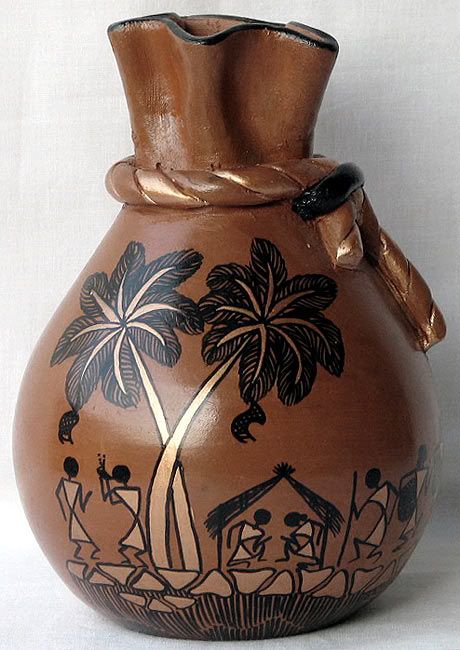Origin of Warli Painting

Nestled at the foot of the Western Ghat Range in Maharashtra, India, is the settlement of an ancient tribe known as the Warlis. These tribal people, who survive on forest produce and worship nature, have carved an international niche for themselves by virtue of their artistry. What originated as a domestic ritual of ceremonial beautification is now revered as a folk art of immense value. The name of the clan has given the name to the art form and today we know it as the Warli Paintings. Artist and scholars believe the painting style to have originated sometime during the tenth century AD, but considering its simple yet vivid expression in form and figures, this school of painting might even be regarded as following a tradition that originated some time in the Neolithic period between 2,500 BC and 3,000 BC.
The noble civilizing mission of the educated society was yet to reach the clay huts and thatched roofs of the Warlis. Thus, painting figures and diagrams was the only way for these non-lettered people to transmit their hereditary knowledge, folklore and good wishes. Women were the main repositories of this heritage. While the `suvasins' (married women, not widowed) did the paintings, the 'Dhavaleris' (the married female priests) sang traditional songs. The walls were first given a thorough wash with wet cow dung. On this red mud was smeared. This gave the walls a brownish finish. Women used bamboo twigs and thin rice paste to draw designs. These paintings were perishable and they were repeatedly erased and replaced by new paintings during different rituals. Warli paintings express everyday life using extremely basic object forms and just one colour - white - on an austere mud base. The painting style is close to pre-historic cave paintings. It breaks the barrier of three-dimensional rendering and the objects seldom overlap. The appeal of these monochrome compositions with rudimentary object forms lies in their lack of pretentiousness in conveying the profound. The core philosophy and social history of a tribal society are conveyed through these paintings in all their humble renderings. Each painting is usually an entire scene that contains various elements of nature including people, animals, trees, hills etc. To Tibetans, the art of thangka is apocalyptical. There is room for the individual painter's creativity only in case of the details of the landscape, the color and shape of the cloud, of rocks and flowers, etc. But what actually illuminates the artifact is its visionary quality. The mystical thangkas are supposed to be the records of visions in all its sensuous details. The Tibetan artist, being concerned primarily with life, death and the life to come, finds it his duty to embody the vision of the life yet to come and thus assist others in their journey towards Nirvana.













0 comments:
Post a Comment